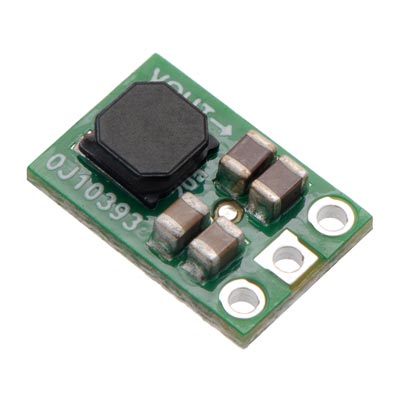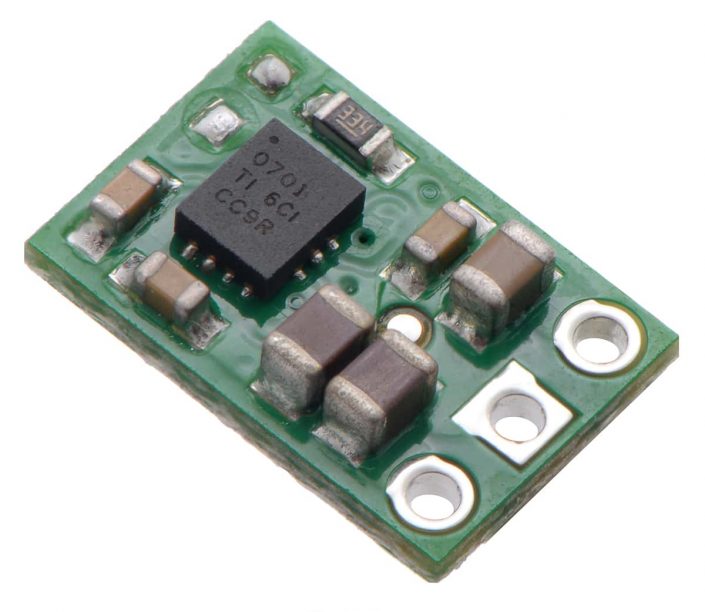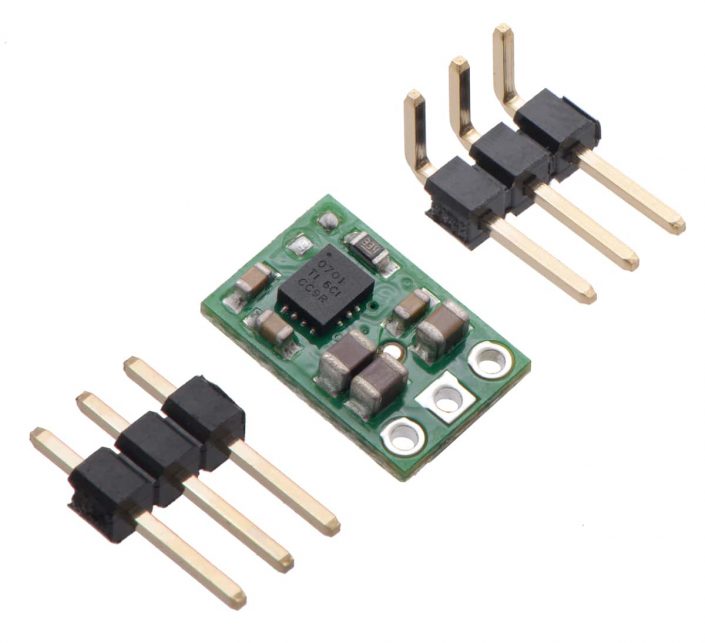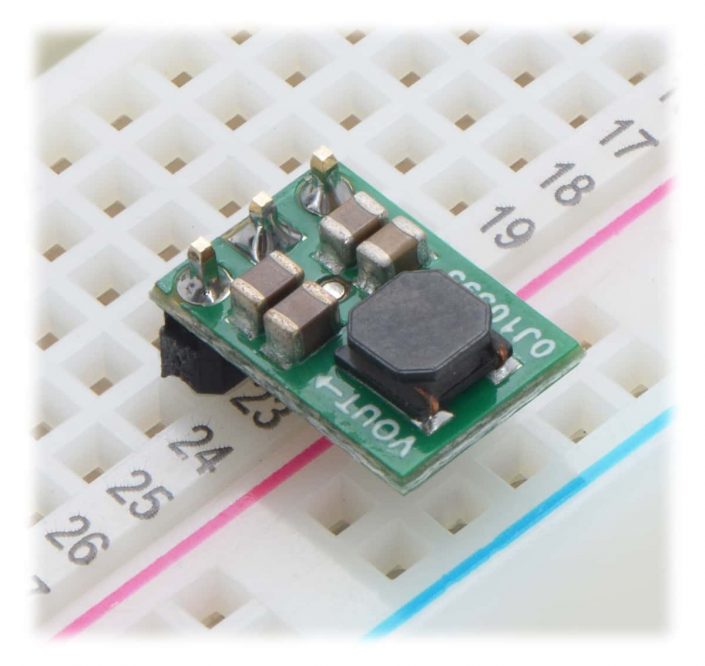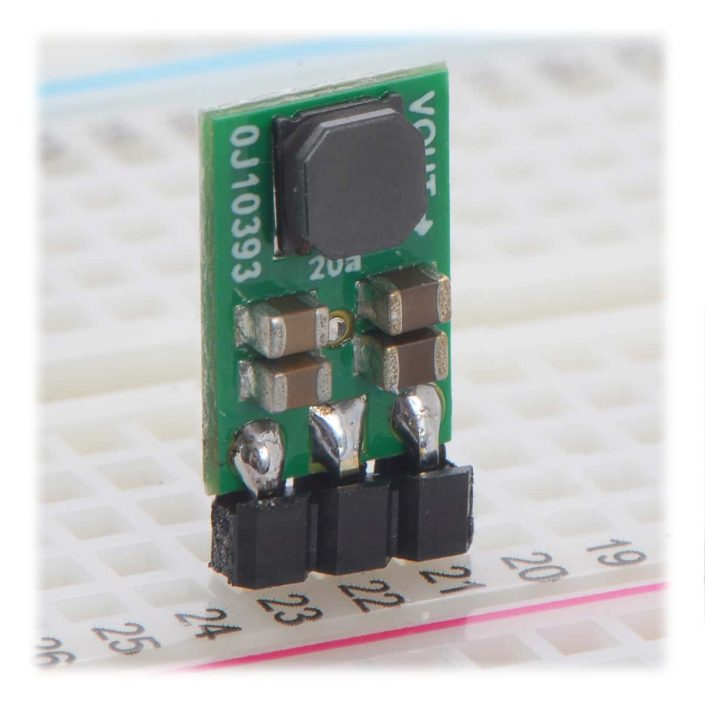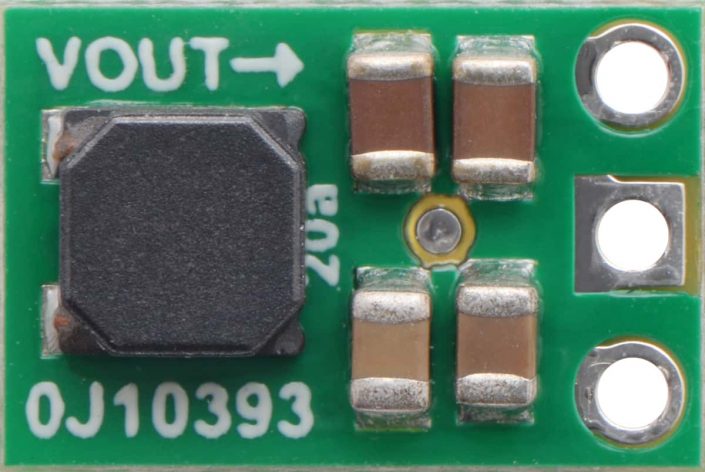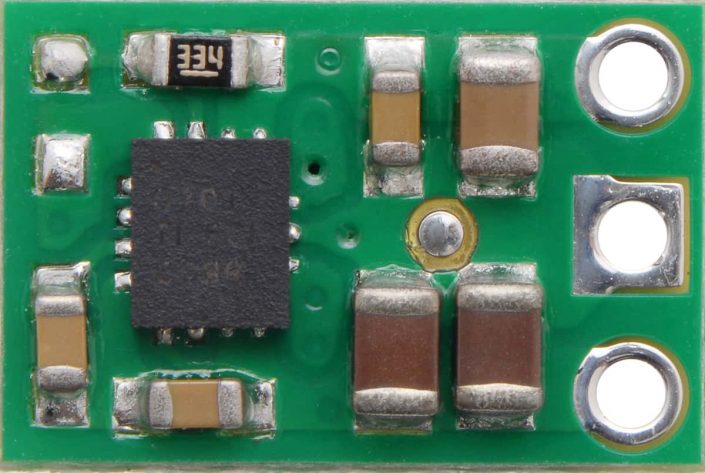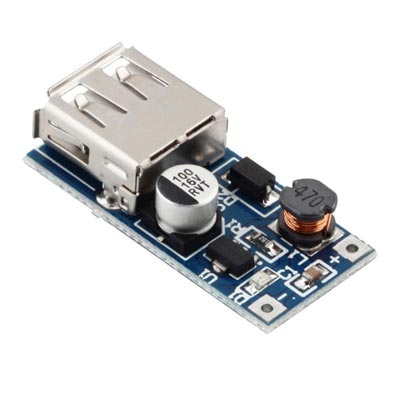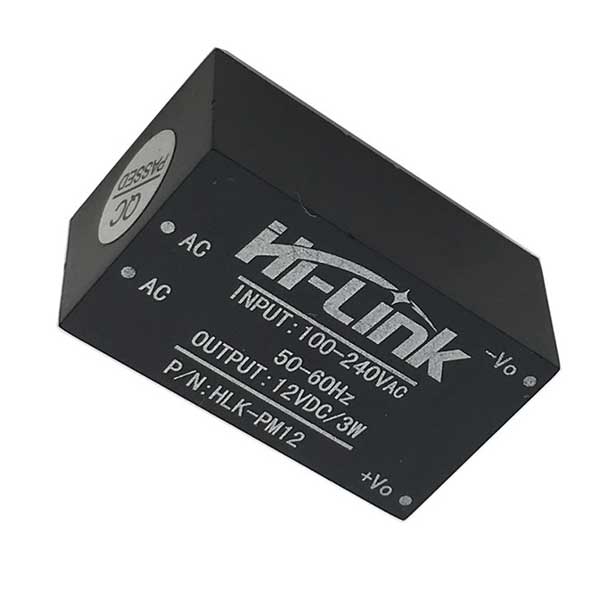5V Step-Up/Step-Down Voltage Regulator
- үнэ: 35,000 төг
5V Step-Up/Step-Down Voltage Regulator S9V11F5
Pololu item #: 2836
The S9V11F5 switching step-up/step-down regulator efficiently produces 5 V from input voltages between 2 V and 16 V. (Note: it requires an input voltage of at least 3 V to start, but it can operate down to 2 V after startup.) Its ability to convert both higher and lower input voltages makes it useful for applications where the power supply voltage can vary greatly, as with batteries that start above but discharge below 5 V. The very compact (0.3″ × 0.45″) module has a typical efficiency of over 90% and can supply a typical output current of up to 1.5 A when the input voltage is around 5 V.
Dimensions
| Size: | 7.6 × 11.4 × 3.8 mm |
|---|---|
| Weight: | 0.5 g |
General specifications
| Minimum operating voltage: | 2 V |
|---|---|
| Maximum operating voltage: | 16 V |
| Maximum output current: | 1.5 A |
| Output voltage: | 5 V |
| Reverse voltage protection?: | N |
| Maximum quiescent current: | 0.2 mA |
Identifying markings
| PCB dev codes: | reg20a |
|---|---|
| Other PCB markings: | 0J10393 |
Features
- – Input voltage: 2 V to 16 V (note: this regulator requires 3 V to start, but it can operate down to 2 V after startup)
- – Fixed 5 V output with +5/-3% accuracy
- – Typical maximum continuous output current: 1.5 A (when input voltage is around 5 V; the Typical Efficiency and Output Current section below shows how the achievable continuous output current depends on the input voltage)
- – Power-saving feature maintains high efficiency at low currents (quiescent current is less than 0.2 mA)
- – Integrated over-temperature and short-circuit protection
- – Small size: 0.3″ × 0.45″ × 0.15″ (7.6 × 11.4 × 3.8 mm)
Using the Regulator
During normal operation, this product can get hot enough to burn you. Take care when handling this product or other components connected to it.
Connections
The step-up/step-down regulator has just three connections: the input voltage (VIN), ground (GND), and the output voltage (VOUT). These through-holes are arranged with a 0.1″ spacing along the edge of the board for compatibility with standard solderless breadboards and perfboards and connectors that use a 0.1″ grid. You can solder wires directly to the board or solder in either the 3×1 straight male header strip or the 3×1 right-angle male header strip that is included. VOUT is labeled on the silkscreen on one side of the board, and GND is in the middle and can be identified by its square pad.
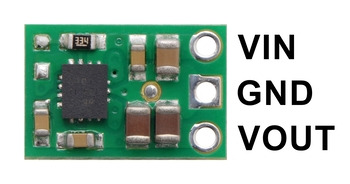 |
The input voltage, VIN, should be between 3 V and 16 V when the regulator is first powered. After it is running, it can continue operating down to 2 V. Lower inputs can shut down the voltage regulator; higher inputs can destroy the regulator, so you should ensure that noise on your input is not excessive, and you should be wary of destructive LC spikes (see below for more information).
The output voltage, VOUT, is regulated to a fixed 5 V, but it can be as high as 5.2 V when there is little or no load on the regulator.
Typical Efficiency and Output Current
The efficiency of a voltage regulator, defined as (Power out)/(Power in), is an important measure of its performance, especially when battery life or heat are concerns. As shown in the graph below, this switching regulator typically has an efficiency of 85% to 95%. A power-saving feature maintains these high efficiencies even when the regulator current is very low.
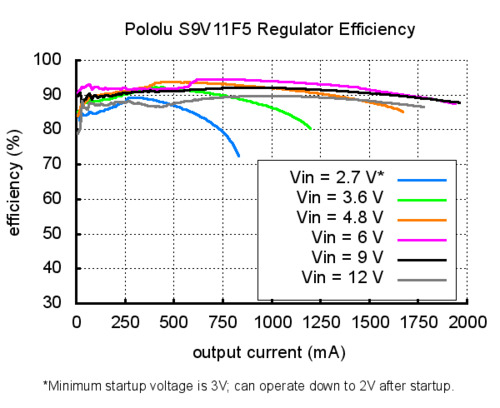 |
The maximum achievable output current of the board varies with the input voltage but also depends on other factors, including the ambient temperature, air flow, and heat sinking. The graph below shows maximum output currents that the regulator can deliver continuously at room temperature in still air and without additional heat sinking. The regulator can temporarily deliver up to around 2 A, though it will typically quickly overheat under such conditions and go into thermal shutdown.
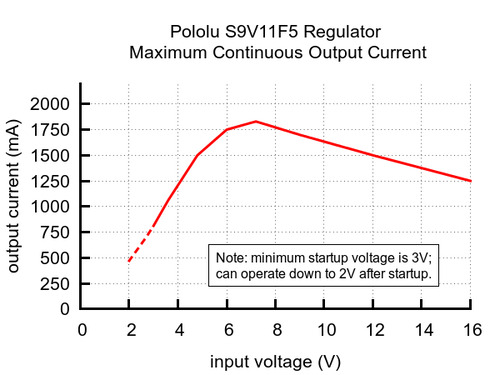 |
Note that the startup current is limited to approximately 700 mA, and currents in excess of this are only available after the output has finished rising to 5 V. Large capacitive loads will generally not pose a problem because they will gradually charge up even with the current limit active, so while they may increase the time it takes the regulator to start up, the regulator should still eventually get to 5 V. A purely resistive load, however, could prevent the regulator from ever reaching 5 V. For example, if you put a 5 Ω resistor between VOUT and GND and then apply power to the regulator, the output voltage will never rise past 3.5 V, the voltage at which the current draw reaches the 700 mA limit. As such, this regulator is intended for applications like robotics, where any large loads are controllable and can be applied only after the regulator has finished starting up.
LC Voltage Spikes
When connecting voltage to electronic circuits, the initial rush of current can cause voltage spikes that are much higher than the input voltage. If these spikes exceed the regulator’s maximum voltage, the regulator can be destroyed. If you are connecting more than about 12 V, using power leads more than a few inches long, or using a power supply with high inductance, we recommend soldering a 33 μF or larger electrolytic capacitor close to the regulator between VIN and GND. The capacitor should be rated for at least 20 V.
More information about LC spikes can be found in our application note, Understanding Destructive LC Voltage Spikes.
Санал болгох бараа
Үйлдвэрлэгч
Угсармал хавтан
- ЭХ ХАВТАН
- МЭДРЭГЧ модуль
- ХОЛБОЛТЫН модуль
- ИНТЕРФЕЙС хөврүүлэгч модуль
- МОТОР ДРАЙВЕР модуль
- ТЭЖЭЭЛИЙН модуль
- РЕЛЕ модуль
- Өргөтгөл модуль
- ТОВЧЛУУР модуль
- ӨСГӨГЧ, ДУУНЫ модуль
- ДЭЛГЭЦ, ЛЕД модуль
- Вольтметр, Амперметр
- RTC модуль
- AD/ DA модуль
- КАМЕР
- Програмчлагч хавтан
- EEPROM, I2C модуль
- Proto shield
- ИЖ БҮРДЭЛ
- Дагалдах хэрэгсэл
Зэс, универсал, сургалтын хавтан
- Зэс хавтан
- Универсал хавтан
- Сургалтын хавтан
Гэр ахуйн барааны хавтан
Лавлах утас: 77107805, 99198321
Хаяг : Улаанбаатар хот, Чингэлтэй дүүрэг, Компьютер ланд, 3-н давхар, 12 тоот
“ЧИП ЭЛЕКТРОНИКС” ХХК
© Copyright – 2025 www.chip.mn

